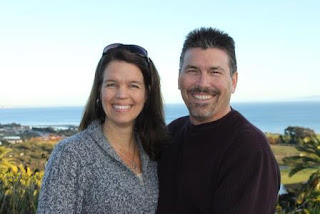Decline & Renewal in West Coast Churches of Christ, part 5
The Decline of the College
Church of Christ (Fresno), part 2
In his book Pursuing
the Full Kingdom Potential of Your Congregation, George Bullard gives a
surprising definition of a mature congregation: "Maturity is that
period when Relationships, Programs, and Management are dominant. Vision is no
longer dominant." He goes on to explain that mature congregations are
already past their prime. Previous success sustains them, and they are on the cusp
of decline. Bullard’s words echo those of Robert Dale (To Dream Again)
before him.
No one at the College
Church of Christ in Fresno (College Church) would likely have known this
definition of a mature congregation. Church of Christ leaders tended to think
they were immune to the troubles of the “denominational” world. But the
description fit the College Church to a T. The College Church’s impressive size
and list of high-quality accomplishments might have fooled many into believing
that it could weather any storm and grow unhindered forever. To believe that,
however, was to be ignorant of the standard trends in North American congregations.
Across denominational
lines, churches tend to follow certain patterns. Even healthy, mature
congregations require a timely renewal of vision lest they head down the path
of stagnation and decline. Churches of Christ that boomed across the US in the
50s, 60s and 70s could have benefitted from the knowledge that decline would likely
set in once the 90s arrived, but they were almost universally unprepared.
Nostalgia is a powerful
force, and the Churches of Christ had created a special market for a unique
kind of nostalgia. Their “restoration” mentality shaped a legalistic view of
church worship, based upon an imagined era. They had carefully distilled and
processed a “worship pattern” through the lens of late nineteenth-century
America and imposed it on the New Testament. This nostalgia for New Testament
worship was actually nostalgia for a previous generation in American life. Foisted
as it was onto the New Testament as the “non-negotiable and non-changing model
for Christian worship,” this added an explosive element to the natural decline
that would hit churches like the College Church.
The 1990s were not easy
years for the College Church. Attendance began to ebb little by little. There
were crises that called the church leadership into question. There were gradual
yet obvious changes made to the worship style, and some long-time members felt
that their opinions were not adequately heard. In an effort to quell dissent,
an unpopular preacher was fired in 1997.
Departures seemed to occur in waves, each one painful and traumatic
for leaders and long-time members. In the initial years, exiting members joined
the relocated Palm Avenue Church of Christ, which built a new facility just
north of the College Church’s building and renamed itself the Woodward Park
Church of Christ. In more recent years, however, departing members have tended
to join nearby megachurches and community churches that belong to various denominations. By 1999, worship attendance had dropped to just over 600. The
average attendance continued to slip every year thereafter, with the single
largest decline occurring from 2002 to 2003 when 100 people left. The average
Sunday attendance in 2008 (the year before I arrived) was about 350.
The result was a twelve-year “wilderness period” without a preaching
minister at the College Church. Striving to shake free from their unique Church-of-Christ
legalism and unknowingly fighting against the natural forces of congregational decline,
survival and healing became the obvious focus. Church leaders tried to foster
an environment of recovery both from the bruising battles of their congregation
and also from the damage of their own legalistic heritage. They emphasized
grace and acceptance, while struggling at times to make payroll or pay off old
debt. This direction undoubtedly contributed to the church’s continued decline,
but it provided a therapeutic space for many. Challenging years, no doubt, but
some current members speak positively of the transformation that occurred in those
years.
Having continued to fall on Bullard’s cycle of church decline,
the renewal process will require patience and time. Today, the College Church
is holding steady at just under 370 folks on a typical Sunday morning. We’re
patiently searching for the right vision to lead us forward into the years to
come.
Over the next few weeks, you’ll read articles from other
church leaders who labor (or have labored) on the West Coast. In April, we’ll
begin to sketch possibilities for renewal. I hope you’ll join the conversation
and spread the word.




Comments